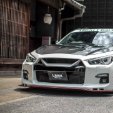How To Get More Power From A Naturally Aspirated (na) Engine
Announcements
-
Similar Content
-
Latest Posts
-
By thejacksta88 · Posted
Hi guys, I've bought my first gtr and wanting to convert to a single turbo high mounted. can people share what they have paid for their gtrs to be converted in Perth looking for recommended workshops also thanks ! -
I'll say bad things about the shit lottery that is Yellow Jackets.
-
Yes, those exactly, either angled, or straight ones. I just dug one of my f**ked up old stock arms out of the crap box. 2 views, showing nipples added in places where they were accessible while installed at both ends of the arm, without clashing with anything else on the car (ie the upright, the inner guard, etc). Circled in red.
-
Don't think that can fit in physically. Are you referring to this? If it happens again, I'm going to get the nismo ones.
-




Recommended Posts
Create an account or sign in to comment
You need to be a member in order to leave a comment
Create an account
Sign up for a new account in our community. It's easy!
Register a new accountSign in
Already have an account? Sign in here.
Sign In Now